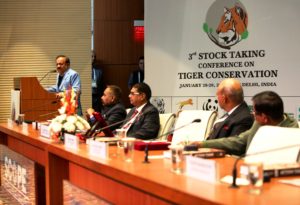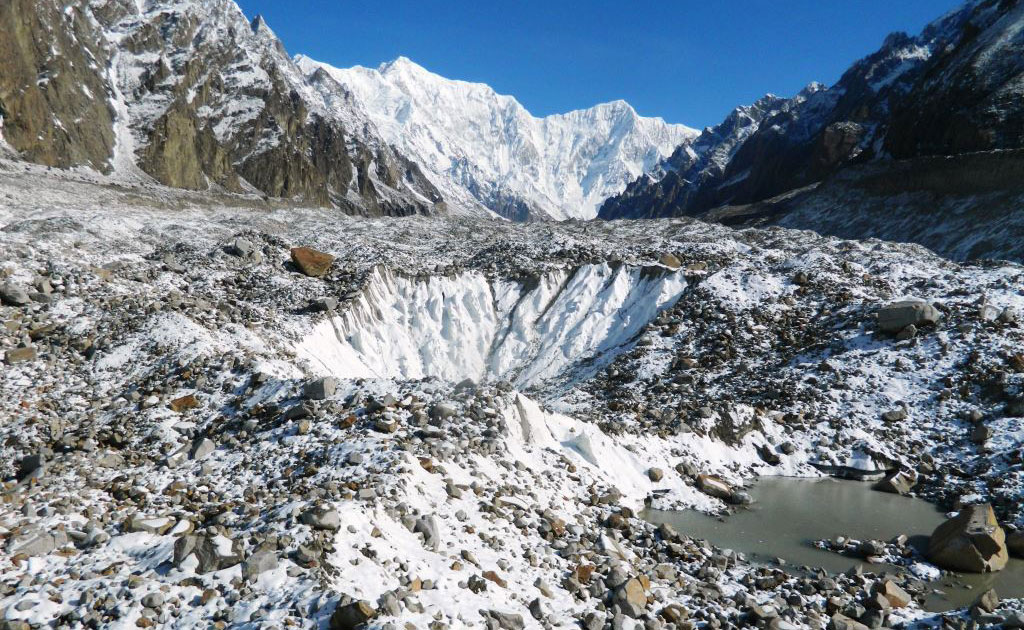The Global Tiger Forum organised the 3rd Stocktaking Conference on 28 – 29 January, in collaboration with Global Tiger Initiative Council (GTIC), National Tiger Conservation Authority (Government of India), Wildlife Conservation Trust (WCT), Wildlife Trust of India (WTI), and WWF. This is the latest collective step in the process that began at the 2010 St Petersburg Tiger Summit – where 13 tiger-range governments committed to Tx2 – an ambitious goal to double the global wild tiger population by 2022.
The conference was inaugurated by the Union Minister for Environment, Forest and Climate Change, Dr. Harsh Vardhan. “Conservation of tigers is a duty which has to be meticulously pursued and more innovative ways need to be devised so that we can better the targets adopted by tiger range countries in 2010 at St. Petersburg, Russia”, said Dr Vardhan.
“We must take concerted action to revive tiger populations globally, and this can only happen with long-term investment and the utmost commitment of government leaders, especially from Southeast Asia where there is a risk of losing wild tigers altogether,” said Mr. Rajesh Gopal, Secretary General, Global Tiger Forum.
Over one-third of tiger conservation sites in the world are severely at risk of losing their wild tigers – the majority of which are in Southeast Asia. Many of these areas lack basic plans for effective management, with over 60 per cent of the sites facing several limitations in anti-poaching, according to a first-ever global survey of tiger sites.[1]
Governments reported on the current status of national tiger recovery efforts, highlighting challenges and sharing best practices. Increasing challenges with poaching, lack of capacity, and habitat loss were highlighted as key barriers to tiger recovery among Southeast Asian governments
The two day conference included country updates on the key performance indicators, KPIs of their National Tiger Recovery Programs (NTRP), and the technical presentations on themes such as protection, habitat/ prey/ tiger recovery, management of human wildlife interface issues, smart green infrastructure, habitat and field management, conservation finance and partnerships. Apart from this, there were also four Side Events, including the reviewing of the Sub continental level Tiger estimation for India, Bangladesh, Bhutan, and Nepal, maximizing synergies of partnerships for tiger conservation, combating wildlife trafficking issues and finally a discussion on the contours of strategy for convention (CITES).













